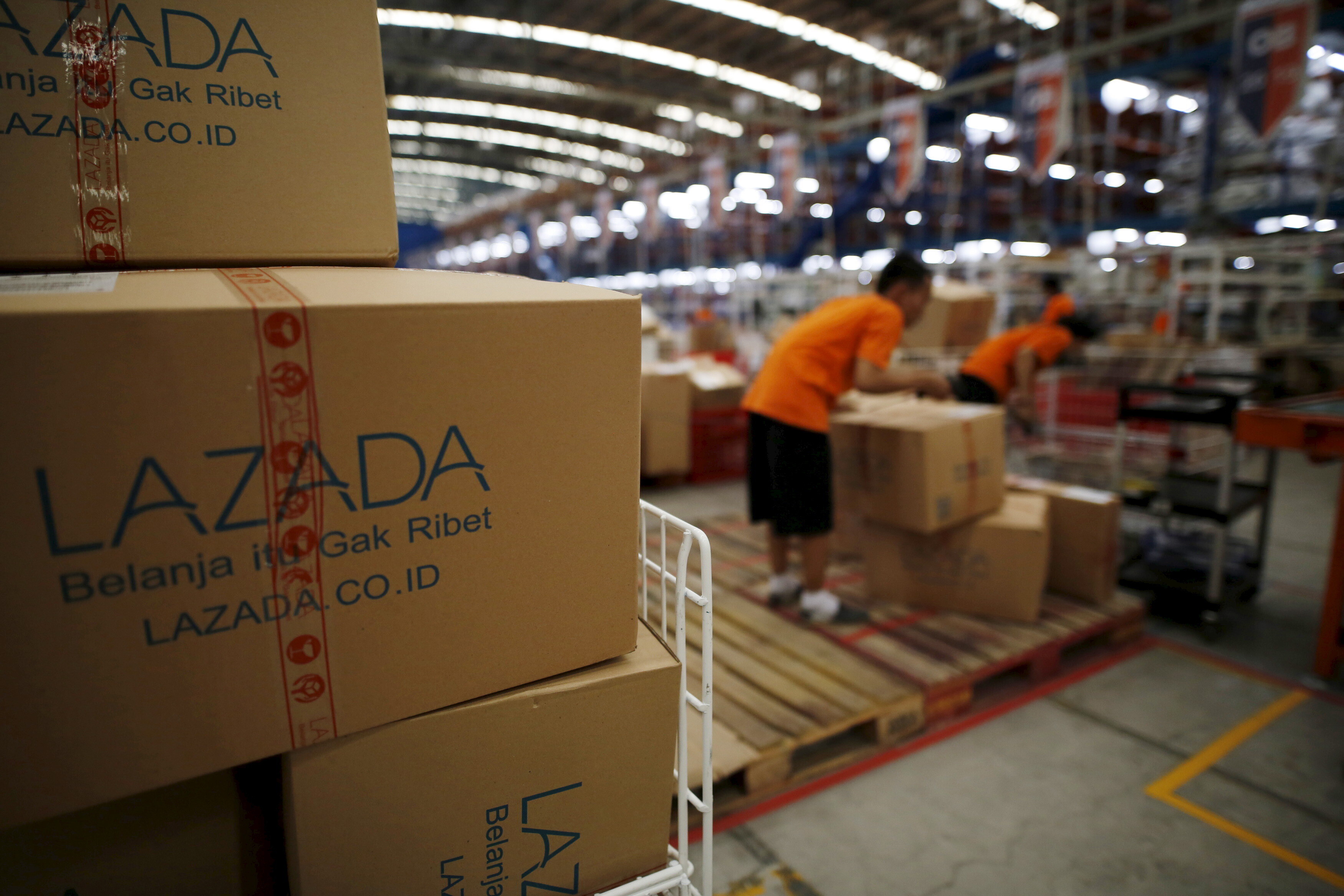This is how drones and other 'tradetech' are transforming international trade

Technology is transforming global trade. Image: REUTERS/Brian Snyder
- Digitalization is the key to unlocking trade potential post COVID-19 and harnessing Fourth Industrial Revolution innovations for the Great Reset.
- Tradetech and innovative solutions for trade facilitation are already being piloted successfully.
- For example, drones used for underwater inspection and port infrastructure maintenance already show how the acceleration of a tech-ready mindset coming out of the crisis could be turned into trade facilitation’s opportunity of the century.
The pandemic has accelerated the adoption of digital technologies. Telehealth services, including remote clinical services offered by telemedicine, is on course to top one billion interactions by the year’s end. E-commerce platforms and online retailers will likely see an 18% increase in sales by the end of the year even as overall retail sales decline. As the pandemic pushes more retail sales online, so has the surge in B2C parcel volume with FedEx and UPS reporting daily volumes at and exceeding “peak” holiday volumes.
Resistance to tech across many sectors is certainly waning and international trade is no exception. While much of international trade operations are still paper-based, the ongoing digitization efforts have raised global GDP by 10.1 percent in the past decade. According to the World Trade Organization (WTO), international trade costs declined by 15 percent between 1996 and 2014 and new technologies play a key role in further reductions.

Technologies have long been used to facilitate trade from digitizing traditional paper-based processes to using Artificial Intelligence and Machine Learning (AI/ML) to optimize delivery routes and predict consumer demand.
Tradetech, or the technologies and innovations that aim to enable trade to be more efficient, inclusive, and equitable, has begun to take root. Ideally, this tech will harness the innovations of the Fourth Industrial Revolution to support the public good.
Drones have taken off
Emerging technologies such as AI and machine learning (ML), Internet of Things (IoT), and smart border systems are increasingly considered key enablers of trade. Drones and unmanned aircraft systems come into this bracket and have been used successfully in the facilitation of logistics and transport – which have been particularly challenged during the COVID-19 crisis.
ASYAD Group, an Oman-based integrated end-to-end logistics provider serving the Middle East and North Africa region, has launched a tradetech initiative, Tech Try, aimed at demonstrating technologies that can facilitate and improve trade by identifying use cases, selecting relevant technologies, and piloting and developing business cases for sustainable technology adoption.

ASYAD launched several pilots relating to the use of drones. These included: underwater drones; port infrastructure drones; drone delivery; and warehouse stock-counting drones. Underwater drones were used to inspect marine infrastructure in the port, detecting cracks and corrosion in the understructure.
The drones were more easily manoeuvered and penetrated tight angles to provide more visibility to the port operators. They replaced human divers performing risky and potentially fatal operations. These drones were also able to inspect hard-to-reach areas above ground such as fenders, cracks in jetties, and other potential defects in addition to the inspection of cranes and other equipment.
This helps to tackle the problem of downtimes, which is one of the inefficiencies that challenge logistics operations. According to a Trelleborg barometer report, 90% of ports surveyed suffer from unscheduled downtime. With an estimated $40 billion market value, ports can improve operations by utilizing complementary predictive maintenance tech to ensure minimum downtimes and guarantee a short turnaround time. The most recent United Nations Conference on Trade and Development (UNCTAD) Review of Maritime Transport acknowledged the importance of turnaround times, citing that a shorter time in the port is generally indicative of high port efficiency and trade competitiveness.
As contact-less trade became the new norm of the COVID-19 pandemic, the use of aerial drones for delivery and warehouse stock-counting offered an ideal solution. Warehouse drones have been shown to scan pallets in under 30 minutes with 99.7% accuracy for a task that usually takes 100 minutes. This application is not unique, however. Other entities, like the Port of Rotterdam, are also implementing similar solutions.
What is the World Economic Forum doing about digital trade?
Challenges to technology adoption
Drones offer just one success story. Other trade-enabling technologies include virtual and augmented reality, 5G connectivity, open supply chain information systems, and the use of robotics and automation.
But there are still several challenges to fully unlocking the benefits of tradetech. These span complementary technologies, regulatory and policy challenges, and the impact on the future of work.
In the case of drones, complementary technologies such as AI or machine learning and IoT improve efficacy and productivity. Consistent data analysis with the help of AI will lead to improved decision-making. Port infrastructure drones will be able to identify exact areas where restoration is needed.
Policies and regulations have to remain agile and adopt holistic approaches to implementation. The use of drones often requires approvals from local, national, and aviation authorities, and this can be a challenge as certification takes time and money, which may limit access to only the most well-funded companies and manufacturers. Agile policies such as performance-based regulation enables the government to close policy gaps as the technology continues to develop.
The increasing use of technologies will also have significant impact on labour and the future of work. Instead of divers checking underwater port infrastructure or warehouse workers performing a daily count of available pallets in a warehouse, we will need to either upskill or reskill current workers to manage the application of these technologies. Some have equated the magnitude of this challenge to the large-scale shift from agricultural work to manufacturing in the early 20th century.
What’s next: the Tradetech Intitiative
The World Economic Forum’s Tradetech Initiative looks to identify the landscape of technologies and innovations that aim to enable trade to be more efficient, inclusive, and equitable. Through a combination of expert consultations with industry leaders, and industry surveys on what technologies will have the biggest impact on global trade going forward, we have the opportunity to identify potential barriers for adoption and development needs in line with the Sustainable Development Goals for small and medium enterprises and developing countries.
Don't miss any update on this topic
Create a free account and access your personalized content collection with our latest publications and analyses.
License and Republishing
World Economic Forum articles may be republished in accordance with the Creative Commons Attribution-NonCommercial-NoDerivatives 4.0 International Public License, and in accordance with our Terms of Use.
The views expressed in this article are those of the author alone and not the World Economic Forum.
Stay up to date:
Drones
Forum Stories newsletter
Bringing you weekly curated insights and analysis on the global issues that matter.







